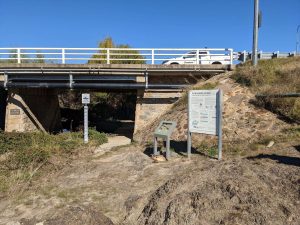Rain puts Cotter construction to test
 By GRACE KEYWORTH
By GRACE KEYWORTH
RECENT rains showed environmental measures are working at the construction on the Cotter Dam Enlargement, according to a surveyor on the site.
The surveyor, who did not want to be named, said the rain had not caused any delay. The site preparation is complete and the first blasting of rock is scheduled to start this week.
Construction was running on schedule.
The rains had proven that the environmental safety measures were adequate and no pollution from the site had entered the water.
“The rains were good because it showed us that the runoff systems worked and also identified a couple of places that needed adjusting for future falls,” he said.
Blasting is to begin this week to remove rock from the abutment where the new dam wall will be constructed.
An Actew spokesperson said that a 700 metre exclusion zone will be set up for the blasts and that local traffic may be disrupted with some roads being closed for up to 20 minutes per blast.
“Signs around the construction site will show the date and time of the next blast, and traffic controllers will ensure that the blast area is free of vehicles when the blasts occur,” he said.
Dr Gary Bickford, who was Actew’s Program Director for Water Security during the planning of the dam, said the enlargement was only part of the plan to secure Canberra’s water supply for the future.
“The Cotter Dam Enlargement is a part of a wider plan to ensure Canberra’s water supply is secure for the future,” he said. “The Murrumbidgee to Googong transfer pipe as well as buying irrigation water licences from NSW farmers completes the current plan to increase the amount of water Canberra is able to use.”
When complete at the end of 2011, the dam’s capacity will increase from 4 gigalitres to 78 gigalitres, making it Canberra’s second largest of storage behind Googong and increasing Canberra’s overall water capacity by 35 percent.
One million tonnes of concrete will be needed. Aggregate will be coming from the debris from the blasting of rock.
Actew’s website says the rock will be transported to the specifically built rock crushing shed on the site for processing and eventually end up in the concrete for the dam wall.





Be the first to comment!